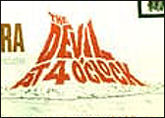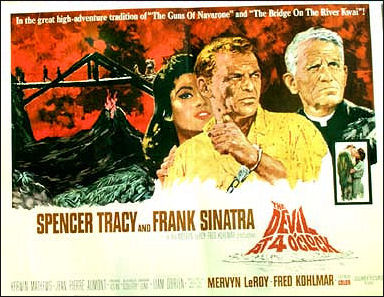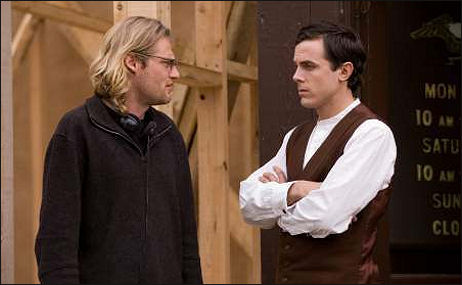For fifteen years and counting, the spiritual dead weight around the neck of the Indiana Jones franchise has been producer George Lucas. The lameness of Lucas’s creative vision was made abundantly clear by the Stars Wars prequels — no argument, a settled issue. It’s also commonly known that Lucas was the principal naysayer in turning down idea after idea and script after script for the fourth Indy film — a process that tore through the entire eight years of the Bill Clinton administration and two-thirds of the reign of George W. Bush.
But it bears repeating once more that the script Lucas finally signed off on, a Steven Spielberg idea crafted and polished by David Koepp called Indiana Jones and the Kingdom of the Crystal Skull, is on some creative-bedrock level based upon a theme park ride. The ride, an attraction at Tokyo’s DisneySea theme park, is called “Indiana Jones: Temple of the Crystal Skull.”
I’m sorry but it just seems diseased — I was going to say “debased” but I held back — that after going through a passel of seasoned writers (Jeffrey Boam, M. Night Shyamalan, Jeff Nathanson, Frank Darabont plus two reported consultations with Tom Stoppard and Stephen Gaghan) for fifteen years, the script they finally decided upon is a conceptual outgrowth of a theme-park ride. A story drawn from the same kind of opportunistic well, in other words, as the Pirates of the Caribbean films. How can any semblance of thunder and wonder come out of something like this?
I’m trying to stifle my crabby attitude about this thing. For years I’ve regarded Koepp as a crafty, above-average writer, and I’m sure he’s given the script hell. I loved the wit-humor in Indiana Jones and the Last Crusade, and Spielberg’s brilliant choreographing of some of the action scenes (the River Pheonix opener on the train, the Venice speedboat sequence, the big Nazi castle, the dirigible scene). But I can’t shake this mantra out of my head: Lucas, theme-park ride…Lucas, theme-park ride….Lucas, theme-park ride.
After thinking this through the legend of Tyler Nelson, the hapless jerk who killed his acting career by spilling some Indy 4 plot points to his hometown newspaper in Oklahoma, the Edmond Sun, seems a tad less shameful.
Indiana Jones and the Kingdom of the Crystal Skull, currently filming under Lucas and director Steven Spielberg and starring Harrison Ford, Shia Lebouf, Cate Blanchett, Ray Winstone, John Hurt, Jim Broadbent and Karen Allen, will open on 5.22.08.









